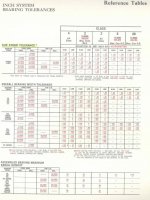Lets say that desired precision bearings are not available or are totally cost prohibitive.
I get the general idea like here:
How to Measure Bearing Tolerances
Micrometer dial indicator should be good to ABEC-7 at least.
Preload the bearing some way or another?
Does the bearing grease need to be washed out and bearing lubricated with thin oil?
I get the general idea like here:
How to Measure Bearing Tolerances
Micrometer dial indicator should be good to ABEC-7 at least.
Preload the bearing some way or another?
Does the bearing grease need to be washed out and bearing lubricated with thin oil?




